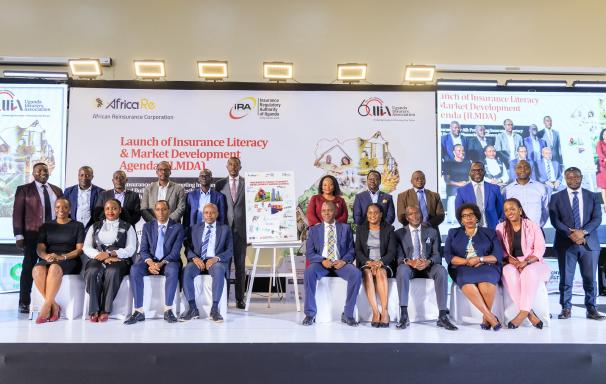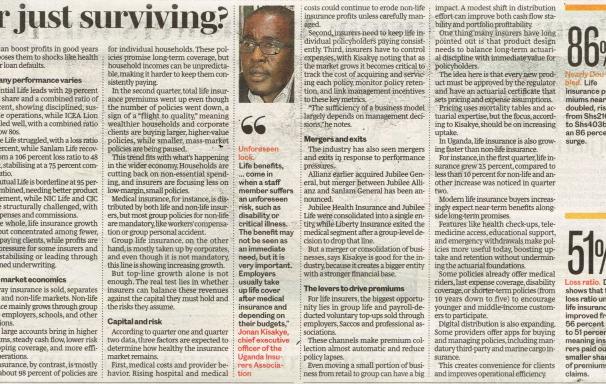Experts in the insurance industry observe that incorporating digital innovations with the traditional methods of distributing micro-insurance products can spur penetration.
These sentiments were shared by Michael McCord, a principal and managing director at the Microinsurance Centre in Milliman during a stakeholder meeting held at Four Points by Sheraton Hotel in Kampala.
The meeting was organized by the Bank of Uganda and the United Nations Capital Development Fund (UNCDF) under the theme ‘Fostering Digital Financial Inclusion beyond payment in Uganda’.
Michael McCord challenged insurers to generate products that speak to the needs of the ordinary customer and also ensure that pricing and distribution of the product does not add extra costs.
“We must make microinsurance that works for both insurers and the insured. Our regulations have not facilitated microinsurance yet it has the potential to grow uptake in the country. For instance, many taxi drivers and boda bodas in Kampala have informal insurance but who regulates them? Mccord added.
Informal insurance does not refer to a specific product that is designed to protect people against specific risks which individuals choose to take up or not. Instead, it refers to actions taken by Ugandans with the intention of protecting themselves against financial risks.
Currently, 2% of Ugandans have informal insurance while overall, 5% is estimated to be the number of all Ugandans insured. There is a need to clear barriers and have a mindset change amongst Ugandans.
“The Finscope Survey clearly shows that there is potential to grow microinsurance, however we need customer insights into the products, for example what is the demand, identify the distribution channels and ensure swift regulation for the informal sector. We must be simple, accessible and efficient in our operations.”
Jonan Kisakye the chief executive officer Uganda Insurers Association acknowledges that the contributions of microinsurance have been minimal over the years.
He notes that the challenge has been lack of trust from potential clients in the informal sector who still need sensitization about the benefits of insurance.
“People do not trust the insurance industry and the mistrust is even worse amongst those in the informal sector. We need to pay claims and generate products that meet their needs. Our focus is to ensure that low-income earners understand that the premiums they pay are worth the product they receive,” Kisakye noted.
He also urged the regulator the Insurance Regulatory Authority (IRA) to consider bringing the informal insurance into the regulatory system to ease their efforts in reaching out to new clients.
“There are many groups out there operating under the informal sector and they are thriving. I think it is now time for the regulator to look into formalizing these groups so that we can tap into this sector. Otherwise, currently it’s impossible to do business with them.”
Sande Protazio Director Planning, Research & Markets Development at IRA agrees that there is potential in the informal insurance space and disclosed that reviews are ongoing on the regulatory framework.
“As you may be aware, we are reviewing our regulations and all your necessary inputs are welcome. We intend to grow the number of the insured to 10% in the next 5years from the current 5% and this will require integrating systems and offering affordable products to clients,” Protazio highlighted.
Source: The New Vision (click here to view)



